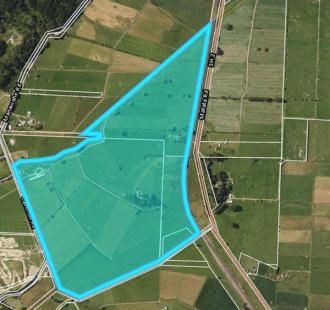 Whakatāne District Council has taken a significant step toward addressing long-standing environmental and public health challenges in Matatā by securing a key piece of land for a centralised wastewater system.
Whakatāne District Council has taken a significant step toward addressing long-standing environmental and public health challenges in Matatā by securing a key piece of land for a centralised wastewater system.
The purchase of the property at 138 Caverhill Road marks a strategic move in the ongoing efforts to develop a much-needed wastewater treatment system for the area.
Currently, Matatā relies on individual septic tanks for wastewater disposal, many of which are ineffective due to high groundwater levels and unsuitable soil conditions. After a thorough options analysis led by a technical team and Te Niaotanga ō Mataatua ō Te Arawa Co-design Group, a centralised wastewater system was recommended as the best solution for the community.
Whakatāne District Council’s Nicholas Woodley Manager of Policy, Planning and Consents, highlights the significance of this land purchase.
“Securing this property is a major step forward for the Matatā Wastewater Project. The land provides a foundation for us to create a more sustainable and environmentally responsible wastewater system that will benefit the entire community.”
The Council’s purchase of the Caverhill Road property is a crucial milestone, as it will provide the necessary land for both the treatment plant and the disposal of treated wastewater. This long-term infrastructure investment will help ensure the environmental and public health needs of Matatā are met, while also supporting future growth in the area.
The 56-hectare property will use approximately two hectares for the treatment facility, with approximately 15 hectares suitable for the irrigation of treated wastewater.
"The Matatā Wastewater Treatment Plant will treat wastewater to a very high standard and will include disinfection to ensure that microbial contamination in the treated wastewater remains very low and often undetectable," says Woodley.
`"In fact, the discharge from the entire treatment plant will contain much less faecal indicator bacteria in total than that from a single household septic tank.
"The type of modern wastewater treatment process we will be using is very compact and produces minimal odour and noise, even within the facility itself. We will also be undertaking amenity planting around the site."
The treatment plant will be designed to accommodate growth in Matatā and ensure it can meet future needs. It will also serve local marae, schools, camping grounds and other facilities.
Beyond its importance to the wastewater project, the property is also strategically located between Matatā and Awakeri, both identified as potential growth areas in the draft Our Places — Eastern Bay of Plenty Spatial Plan. This positions the site as a key asset, not only for addressing current wastewater needs, but also for future development opportunities.
“The location of the land is ideal, not only for this wastewater project but potentially for future growth in the wider region,” adds Woodley.
“It’s an investment that will serve our community well for years to come.”
The Matatā Wastewater Project is now moving toward the resource consent phase, with the land purchase bringing the project closer to reality.